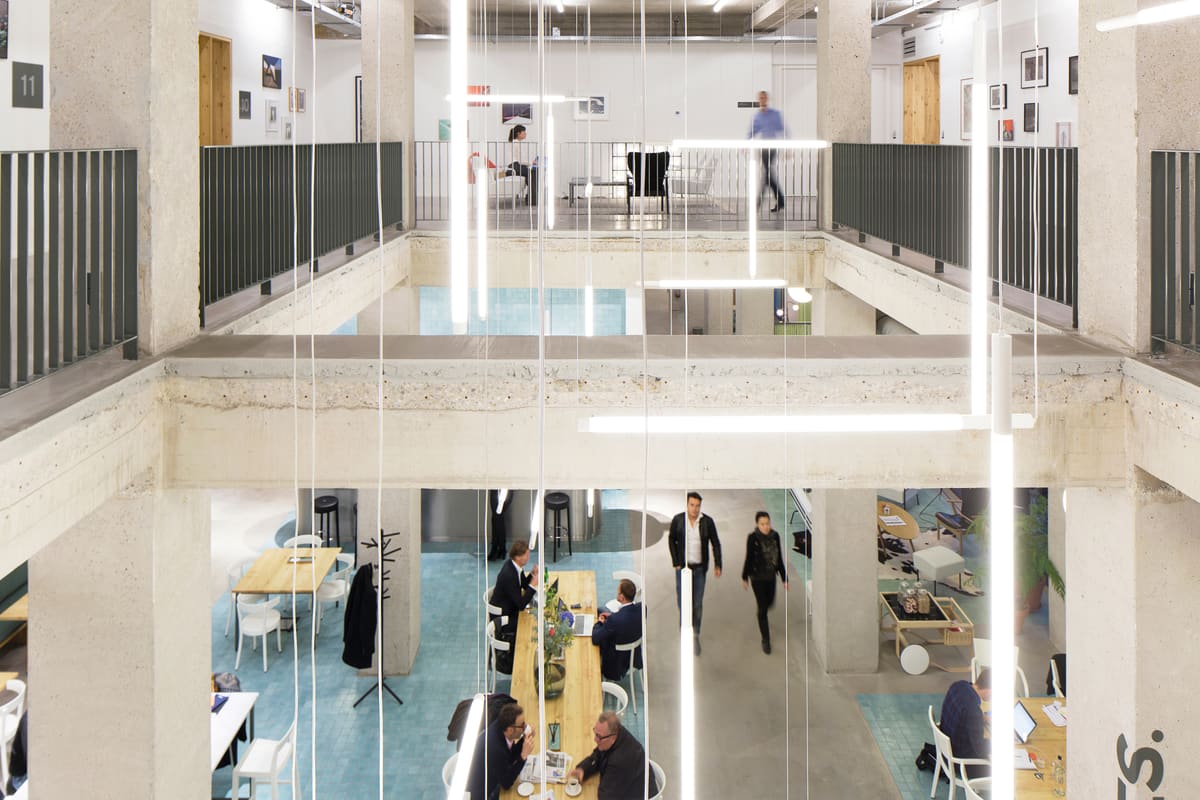As businesses across the world adopt the hub-and-spoke model, the benefits for attracting and retaining talent are clear.
With Covid-19 restrictions beginning to ease in many countries, offices are starting to reopen. But, in many cases, this is on quite a different basis than pre-pandemic. The trend for hybrid working – particularly the hub-and-spoke model – has been rapidly accelerated by a year of remote working, and businesses have begun to realise its benefits for people, profits and the planet.
The hub-and-spoke model recasts the corporate HQ as a ‘hub’ for collaboration and connecting, ending its tenure as the base from which most people work on a day-to-day basis.
When they’re not needed for face-to-face sessions, employees are able to base themselves at ‘spoke’ locations closer to home – often flexible workspaces. In the first half of 2021 alone, IWG has signed ground-breaking deals with firms including Standard Chartered bank and NTT, both of which have committed to making hybrid working permanent. Such partnerships have granted more than a million new customers access to IWG flexspaces around the world.
Remote recruitment
LinkedIn, the professional networking site, saw a huge increase in demand for remote work during the pandemic. It also noted a five-fold increase in the number of remote job postings, underlining employers’ responsiveness to the shift – which, even as Covid-19 recedes, shows no signs of regressing.
Slack’s Future Forum survey of 4,700 knowledge workers found that the majority never want to go back to the old way of working. Only 12% say they’d prefer to return to full-time office work, whereas 72% want their employers to retain a hybrid model after lockdowns end.
Hub-and-spoke working offers improved work-life balance for employees, but the advantages of recruiting staff under this model are significant, too. No longer bound by limiting their search to specific locations, firms can begin looking beyond their usual talent pools to find true best-fit candidates for posts.
Once such candidates are found, offering them access to flexible workspace allows them to work close to home, but ensures they are in a professional, well set-up environment that’s conducive to productivity.
Karin Kimbrough, Chief Economist at LinkedIn, believes hybrid working will have a profound impact on the talent landscape and will be “good for democratising access to opportunity”.
She says: “Companies in major cities can hire talent from underrepresented groups that may not have the means or desire to move to a big city. And in smaller cities, companies will now have access to talent that may have a different set of skills than they had before.”
Virtual hiring
Hybrid models are also helping to make hiring more efficient. Tim Skipper, founding director at recruitment consultancy Totum Partners, says: “Hybrid is helping to shorten interviewing processes. In particular, early stage interviews can be conducted via video call. This is resulting in a shortened hiring time because candidates are more readily available.”
Virtual recruitment quickly became the norm during the pandemic, and research from LinkedIn found that 81% of professionals believe virtual recruitment will continue, even after Covid-19 is behind us.
While onboarding new recruits virtually can be a challenge, it isn’t impossible to engage them with the wider team and encourage buy-in to the broader company culture.
Alex Hattingh, Chief People Officer at HR tech firm Employment Hero, advises leaders to create a bespoke online induction for new starters. As well as collecting essential details, introducing them to the team and sharing company values, this should give the incoming employee a complete understanding of the company’s culture and operations – so that when they do visit the ‘hub’ they immediately feel like part of the furniture.
Improving inclusivity
A key demographic that stands to benefit from the shift to hybrid is women. While women currently account for half of all entry-level employees, only a third of senior managers and a fifth of C-suite executives are female.
One of the reasons for this is the disproportionate division of family responsibilities, with women’s careers more likely to take a hit than those of male partners when children are born.
Caroline Whaley, co-founder of Shine for Women, says hybrid working is giving women the sense that they’re taking back control of their lives. Women don’t want to go back to a full-time, in-the-office scenario, insists the diversity and inclusion expert. She says organisations that have previously resisted listening to their people are finally understanding that flexible working patterns – and all their advantages – are here to stay. “If you want more women at the top, a hybrid way of working has to be the way forward,” she explains.
Offering employees more flexibility won’t only help to narrow the gender pay gap – it can also boost diversity in other ways. Hybrid models make it easier for people with chronic health conditions and disabilities to stay in regular work and also support those with caring responsibilities to balance these with a job.
The freedom to work from a flexspace closer to home – and the removal of the pressure to commute – allows ‘real life’ to dovetail with work more easily than ever before. For those juggling medical appointments, school drop-offs or checking in on elderly relatives, such flexibility is invaluable.
Reputation and retention
Businesses that adopt a permanent hybrid working model will set themselves apart from competitors who resist accepting change. Flexible, people-friendly working policies will be key differentiators for job hunters in the new world of work. Indeed, a report from Absolute Personnel shows that almost two-thirds of candidates already consider flexible working the most important benefit when searching for a role.
Just as importantly, adopting a hybrid approach now could pay dividends for businesses later via improvements in staff retention. People who feel their work-life balance is supported are less likely to leave an organisation – and the cost savings associated with a lower employee turnover are significant.
Research from the Society for Human Resource Management suggests that every time a business replaces a salaried employee, it costs six-to-nine months’ pay. This means that hiring a replacement manager making £40,000 a year might see a company spend £20,000 to £30,000 on recruiting and training its new starter.
IWG CEO Mark Dixon believes that “the future of work is with us today” – and there’s no going back. “The shared workplace only ever existed because it contained the materials and equipment workers needed but didn’t have at home,” he says. “Now, herding people to the office is looking increasingly obsolete, expensive and inconvenient, whereas the hybrid approach is delivering spectacular benefits for employees and employers alike.”
For more than 30 years, IWG has been helping businesses like yours with corporate flexspace solutions. Find out how we can support you today.






